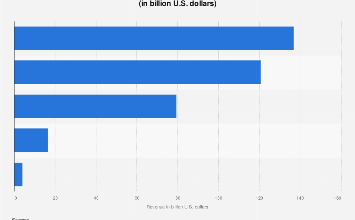New Relic Report Shows IT and Telecommunications Industries are Embracing Observability to Capitalise on AI and Cloud

GUEST RESEARCH: New Relic State of Observability for IT and Telecommunications report shows 43% of respondents say the adoption of AI technologies are driving the need for observability, and 56% have a preference for a single observability platform
New Relic, the all-in-one observability platform for every engineer, published its State of Observability for IT and TelecommunicationsState of Observability for IT and Telecommunications report, which offers insights and analysis on the adoption and business value of observability for the IT and telecommunications (telco) industry. The report is based on insights from 423 technology professionals and was developed in association with the 2023 Observability Forecast. It reveals organisations are facing costly outages and adopting observability to improve cross-team collaboration and strategic decision making.
The report highlights the importance of implementing full-stack observability, with the top trends driving adoption being the development of cloud-native application architectures (48%), adoption of AI technologies (43%), migration to a multi-cloud environment (40%), and an increased focus on customer experience management (39%). The report findings also show that IT and telco organisations understand the business value of observability, with 55% of respondents noting that observability improves collaboration and decision making.
“The IT and telco industries are going through mammoth change. Those with legacy infrastructure must modernise and implement rapid digital transformation initiatives to keep pace with their digital-native counterparts,” said New Relic Chief Design and Strategy Officer Peter Pezaris. “There is a customer expectation that the benefits of new technologies like 6G, edge computing, and AI are made available to them, all while current service levels are maintained or exceeded. In such a high stakes environment, full-stack observability is crucial, and IT and telco providers should leverage it to capitalise on these advancements.”
“The APAC region has some of the fastest growing 5G markets in the world with consumer demand for data-heavy digital content at an all-time high. IT and telco organisations are under constant pressure to continue to innovate and grow. To truly thrive, they need to unlock the power of their data. Observability is the key – it grants the ability to see, understand, and analyse every aspect of their networks and applications. This empowers them to leverage AI effectively, build robust and cost-efficient infrastructure, and ultimately, develop innovative services that drive revenue”, said New Relic Senior Vice President and General Manager, Asia Pacific & Japan, Kris Day.
Observability and AI create industry leading advantages
Close to half (43%) of IT and telco organisations said AI technologies were driving observability adoption. When organisations integrate observability with AI, they position themselves at the forefront of technological innovation by addressing the challenge of sprawling data sets and improving operational efficiency. Observability is crucial to the success of AI, as it helps teams to understand their telemetry data, how to improve MTTR, and enables developers to easily apply fixes to code-level errors in their integrated development environment (IDE). It increases automation for rapid alerts, while improving incident detection and resolution.
Tool consolidation is key to reducing outages
The report uncovered that IT and telco organisations have higher outage frequencies compared to other industries, with 37% experiencing outages at least once a week compared to the industry average of 32%. This adds up to a median annual outage cost of $12.71 million, which emphasises the critical need for improved monitoring and rapid issue-resolution capabilities.
IT and telco organisations were more likely than average to use multiple monitoring tools, with more than two-thirds (69%) using four or more tools for observability compared to 63% overall. This indicates that engineering teams are spending significant time and money tool-hopping to better understand the different aspects of their business and to resolve the issues that lead to costly outages and poor customer experiences.
Additionally, there was a prevailing preference among respondents for a single, consolidated platform (56%), with just over two-fifths (41%) saying that their organisation was likely to consolidate tools in the next year to maximize their observability spend.
Security and DCX are essential components to success
System security is crucial in all industries, but especially to IT and telco organisations that operate critical infrastructure. Most respondents (96%) plan to use security monitoring by mid-2026, demonstrating that system security maintenance is a primary focus.
Additionally, digital customer experience (DCX) continues to be a paramount consideration as organisations face unprecedented opportunities to engage with customers in new ways. IT and telco providers can use digital experience monitoring (DEM) to capitalise on these opportunities by tracking and optimising performance and reliability to deliver improved experiences through real user monitoring (RUM). Nearly half (45%) of IT/telco respondents expected to deploy synthetic monitoring in the next one to three years, 36% expected to deploy mobile monitoring, and 23% expected to deploy browser monitoring.
“My teams aren’t disconnected or buried in the complexity of our services, alerts, logs, or data. Our integration platform gives one clear view, so issues can be identified and fixed before it impacts our customers. That’s what truly matters,” said Skyscanner Principal Software Engineer Daniel Gomez Blanco.
For more information, view the State of Observability for IT and Telco report.



